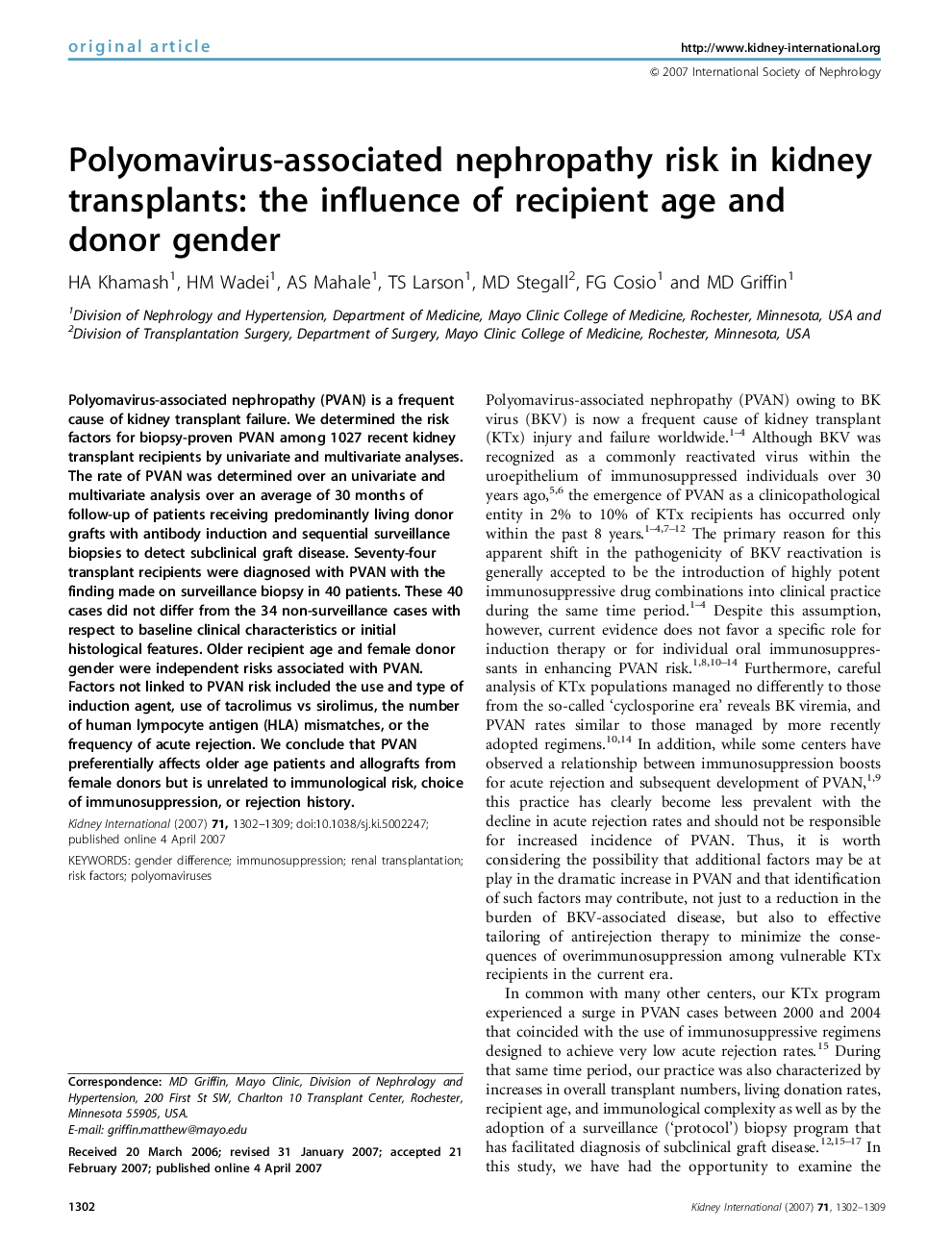| Article ID | Journal | Published Year | Pages | File Type |
|---|---|---|---|---|
| 3887222 | Kidney International | 2007 | 8 Pages |
Polyomavirus-associated nephropathy (PVAN) is a frequent cause of kidney transplant failure. We determined the risk factors for biopsy-proven PVAN among 1027 recent kidney transplant recipients by univariate and multivariate analyses. The rate of PVAN was determined over an univariate and multivariate analysis over an average of 30 months of follow-up of patients receiving predominantly living donor grafts with antibody induction and sequential surveillance biopsies to detect subclinical graft disease. Seventy-four transplant recipients were diagnosed with PVAN with the finding made on surveillance biopsy in 40 patients. These 40 cases did not differ from the 34 non-surveillance cases with respect to baseline clinical characteristics or initial histological features. Older recipient age and female donor gender were independent risks associated with PVAN. Factors not linked to PVAN risk included the use and type of induction agent, use of tacrolimus vs sirolimus, the number of human lympocyte antigen (HLA) mismatches, or the frequency of acute rejection. We conclude that PVAN preferentially affects older age patients and allografts from female donors but is unrelated to immunological risk, choice of immunosuppression, or rejection history.
